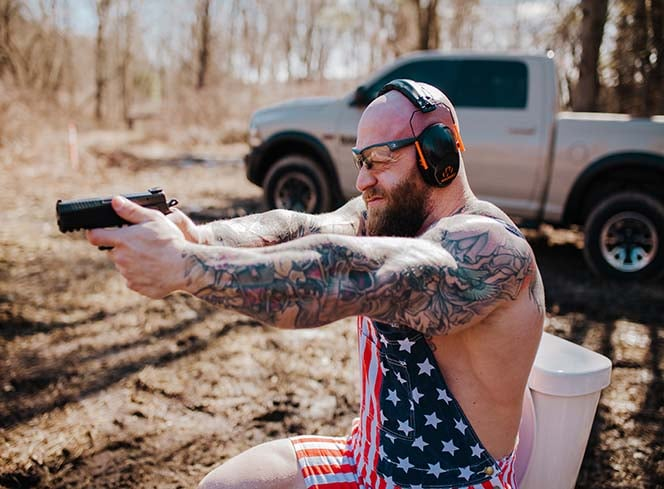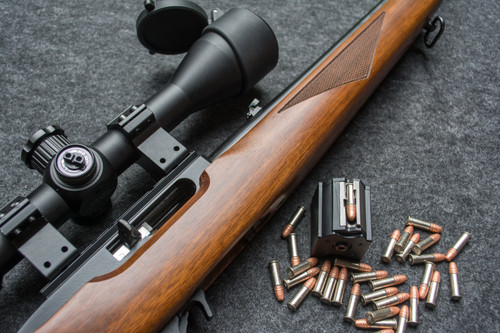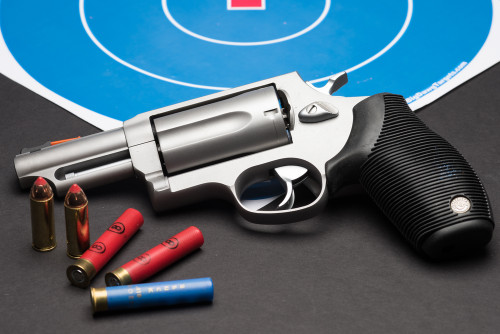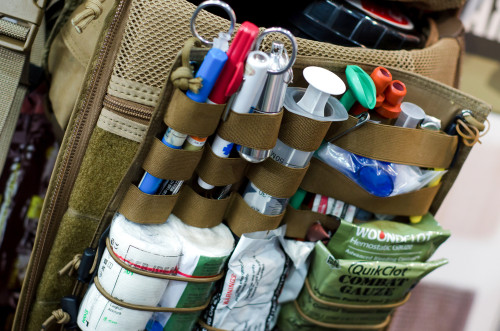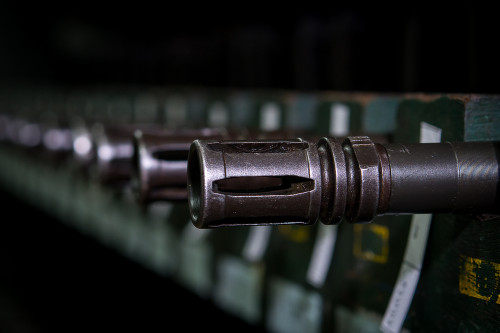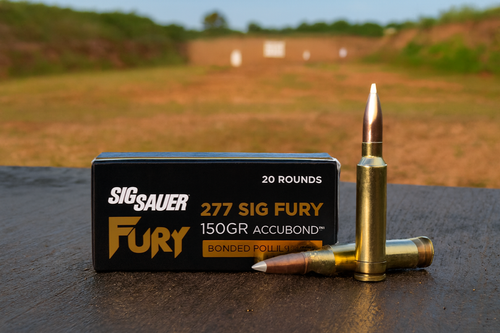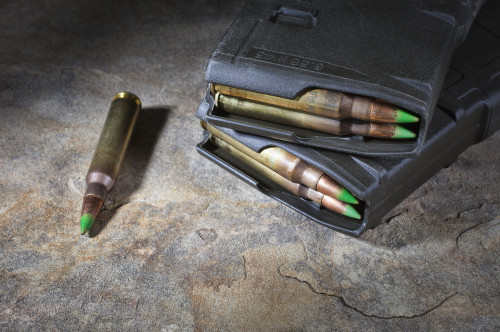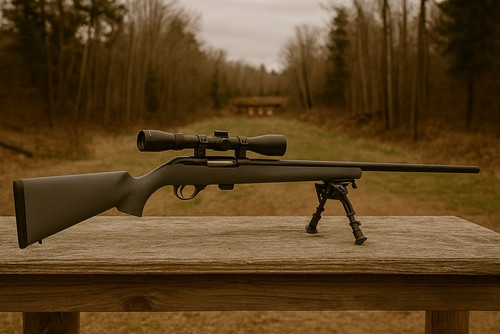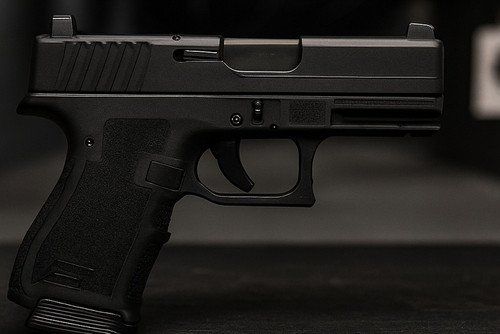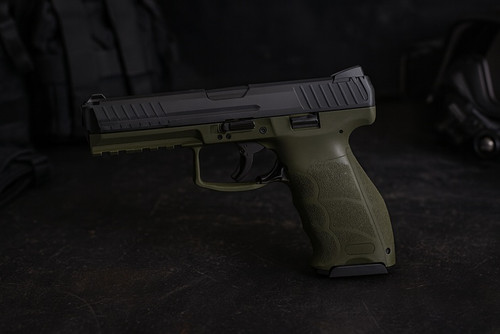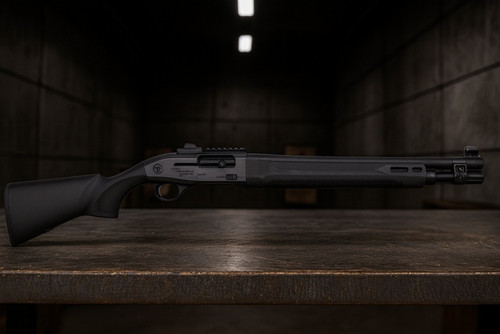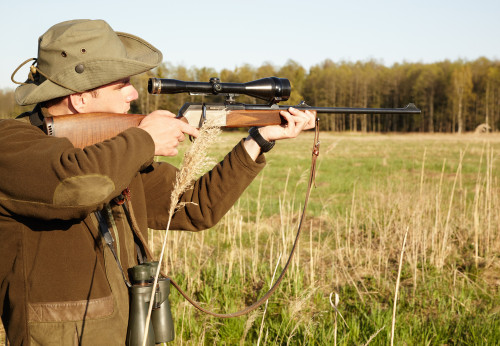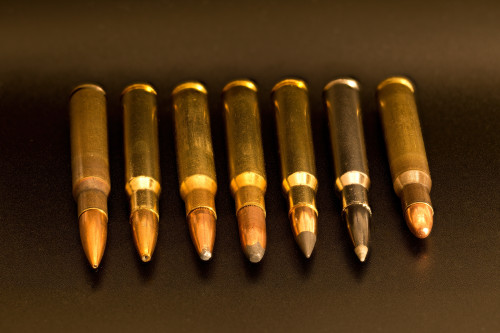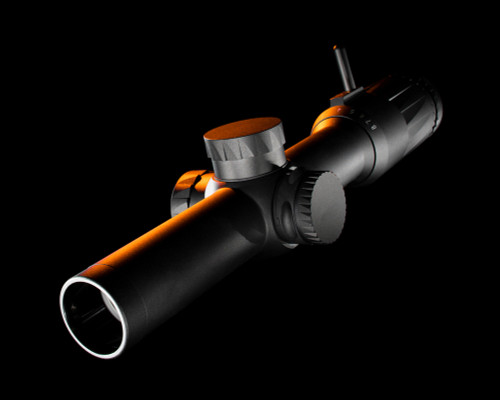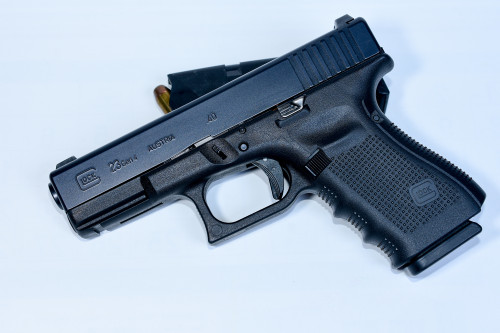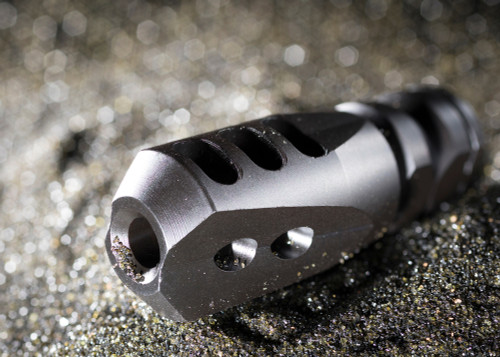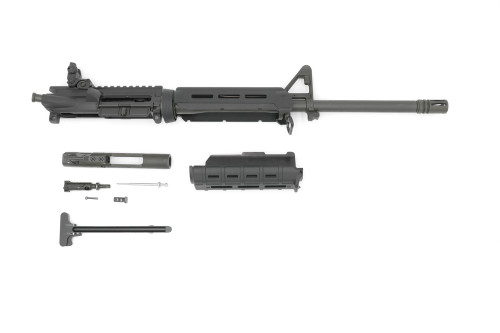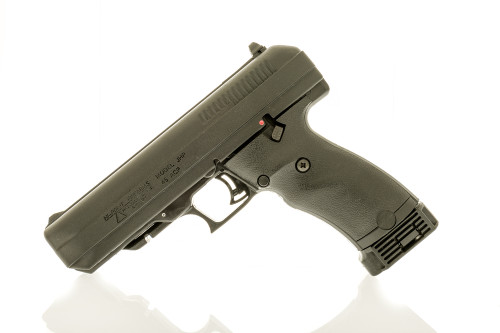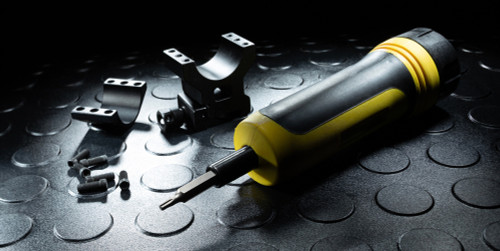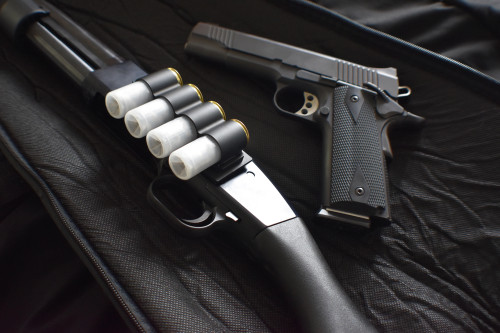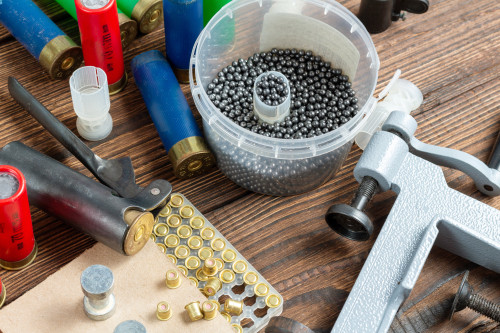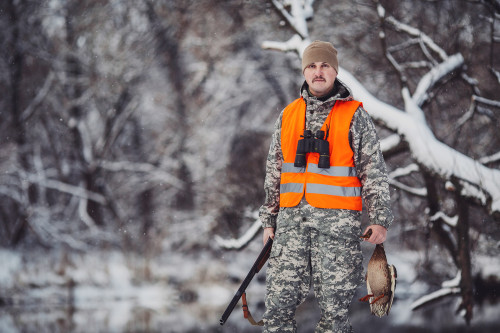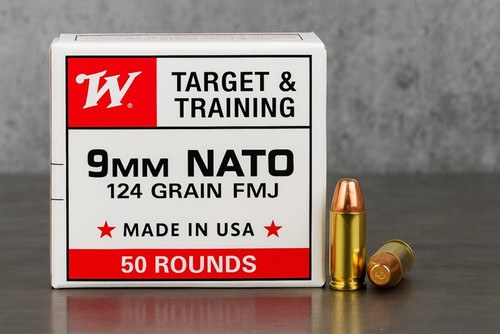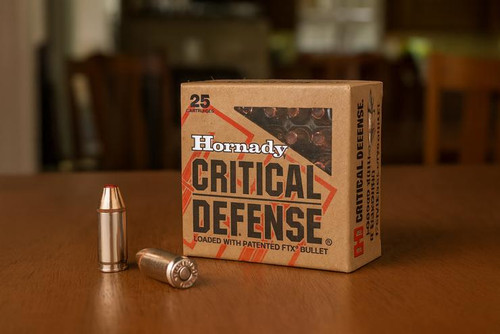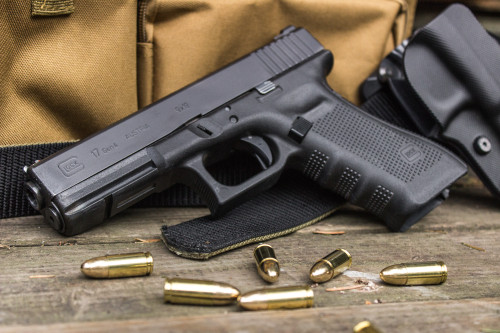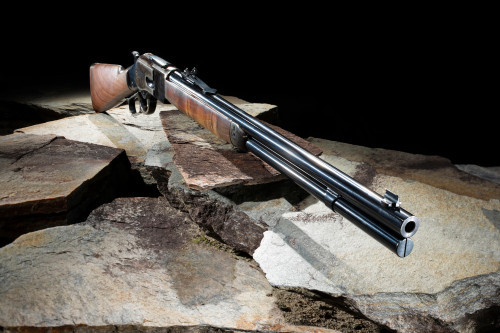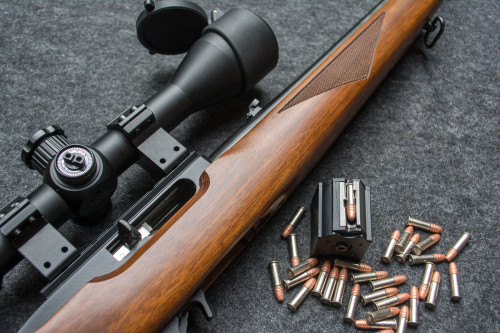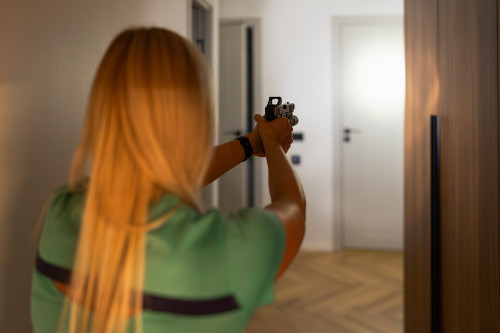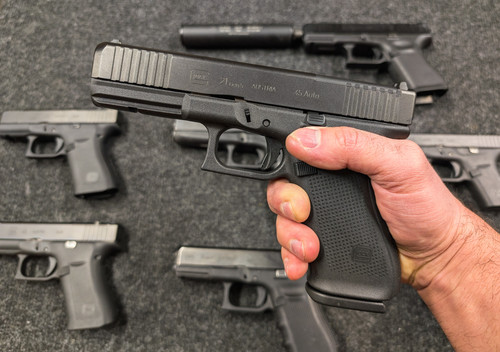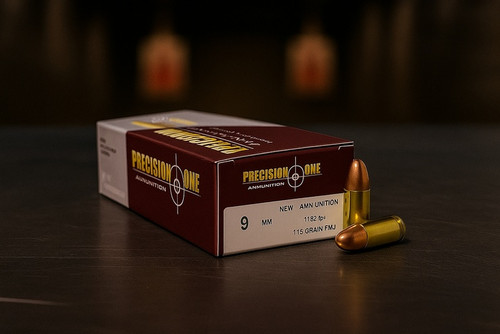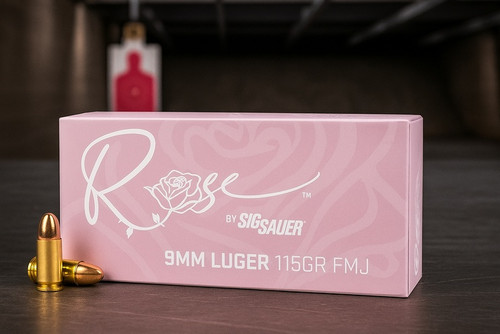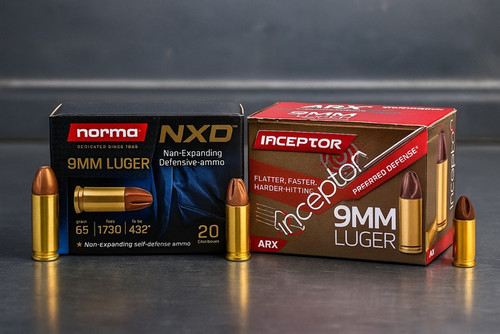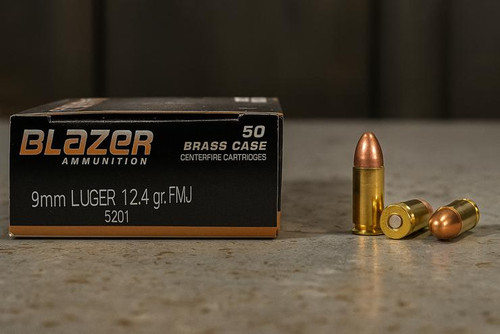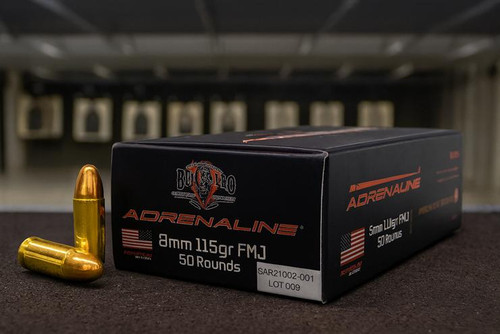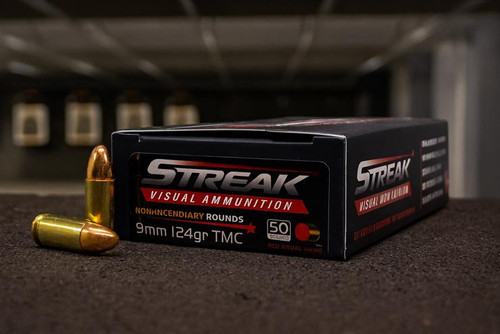If you are willing to put effort into chasing a big game animal, you need the right equipment for the job. Big game hunters spend enough time drawing a tag and planning the trip itself. When you finally see your target animal in your sights, you want the right rifle cartridge to take it down quickly, effectively, and ethically.
There are lots of great rifle cartridges for hunting deer or other standard-size woodland critters (although deer are technically considered big game). But what about moose, elk, wild boar, bears, or caribou? 5.56 probably won’t cut it. You need certain cartridges to make your shots count with these big, thick-skinned creatures.
The fact is, there is not a single best cartridge or caliber for any particular hunt. You need more powerful calibers for larger animals, but how do you pick the right one from a huge list of similar calibers? It all depends on two things:
- Which animal you're hunting
- How far away you intend to be from the animal when you pull the trigger
Let’s take a closer look at big game hunting and the ammo calibers the best hunters use to handle the larger animals.
Understanding Big Game Hunting Calibers
The term "big game" is fairly vague. For most people in the Americas, the cut-off for "large" is usually a coyote. Coyotes and smaller land animals are mostly considered vermin. Birds and waterfowl have their own category. Everything else is usually considered big game. This includes anything from an 80-pound Georgia whitetail to a 1,500-pound Alaskan moose. Of course, you would need two very different cartridges to hunt each of these creatures.
Knowing cartridge terminology is helpful when you start comparing them — and you’ll need to compare quite a few to find the right round for your hunt. Once you know the basics, you will start seeing trends like larger grain bullets for larger animals, faster bullets for longer shots, etc.
Here are some of the key terms you need to know:
- Cartridge - This is the entire package — the bullet, casing, primer, and powder. Sometimes referred to as a "round."
- Caliber - Technically, this is the diameter of the projectile (aka bullet). However, this is often used to loosely refer to the entire cartridge. However, many different cartridges can have the same diameter bullet and therefore would be the same caliber.
- Bullet - This is the projectile, often consisting of a lead core surrounded by a layer of copper.
- Ballistics Coefficient - A number representing how efficiently the bullet flies through the air. A higher ballistics coefficient (BC) means less drag and better performance.
- Casing - Typically made of brass, this part of the cartridge houses the bullet and primer and contains the gunpowder inside. Often referred to as a "shell."
- Primer - When struck by the firearm's firing pin, the primer ignites the gunpowder, which then combusts and propels the bullet forward through the barrel.
- Grain - The standard unit of measurement for bullet (projectile) weight. One ounce equals 437.5 grains.
- Velocity - The speed of the bullet in flight, often in feet per second (fps). Muzzle velocity is the same term but measured at the firearm's muzzle instead of some distance away.
- Energy - The kinetic energy of the bullet in flight. Energy = 0.5 * (bullet mass) * (velocity) * (velocity), measured in foot-pounds. Muzzle energy is the same term but calculated with the muzzle velocity.
- Drop - How far the bullet drops vertically from its initial plane at a given distance.
- Drift - How far the bullet drifts to one side or the other at a given distance. Often referred to as wind drift.
- Spin Drift - When shooting at more than 1,000 yards, you’ll need to account for spin drift, where the bullet drifts sideways in the direction of the barrel twist rotation (most go to the right).
For big game, we want to use calibers that produce at least 1,000 foot-pounds of energy for something like a whitetail or mule deer. If you are chasing an elk, black bear, or caribou, you will want at least 1,500 foot-pounds of energy when the bullet reaches the target. For anything larger, like a moose or brown bear, you will likely want a cartridge that produces over 2,000 foot-pounds of energy.
Importance of the Right Caliber in Big Game Hunting
Choosing the right caliber for big game hunting doesn’t mean shoving the biggest cartridge you can fit in your gun. Yes, you need to find one that disperses enough energy when it hits the target, but you don’t want to be excessive. A cartridge that’s too powerful can ruin a lot of the meat and make a huge mess. Plus, the bigger the cartridge, the higher its recoil (meaning you might miss or blow out your shoulder and bring home nothing from your hunt). So if you want a comfortable shooting rifle that's fairly lightweight, a lighter cartridge is a better idea.
You just need enough energy to ethically kill your target. Muzzle energy is important, but also pay attention to the bullet’s energy when it reaches the target. Your bullet will lose speed (and therefore energy) due to drag as it flies, meaning it will have much less energy by the time it gets to a target 400 yards away compared to when it came out of the muzzle.
This is why you need to look at a ballistics chart when considering rounds. First, figure out your max shooting distance, aka how far from the target you are comfortable shooting. Then, look for a cartridge that has enough energy to ethically kill a target at that range. You could need anywhere from 1,000 to 2,500 foot-pounds depending on your game, so do your research and check your ballistics data.
Top 10 Calibers for Big Game Hunting Success
There are hundreds of rifle calibers or cartridges to choose from, but only a few count as fan favorites. These selected big game bullets are on this list because they do their job especially well. Today, we have compiled a list of 10 of these cartridges for big game hunting that are sure to get the job done, with our recommendations for game choices.
1 | .30-06 Springfield
The .30-06 Springfield has been around for a long time. It was first introduced in 1906, which is where the "-06" comes from. That makes this cartridge over 115 years old! It cut its teeth in World War I in the famous M1 Garand. Since then, it’s been used for everything from war to hunting to fun on the range. While it has benefited from upgrades over time, this old cartridge still keeps up with the times.
That said, the .30-06 is not a super efficient flier. It starts off with 2,872 foot-pounds of muzzle energy but drops to around 2,500 at 100 yards. By the time you reach 400 yards, you will have around 1,500 foot-pounds of energy, and your bullet will have dropped around 30 inches. But this cartridge hits hard within a couple of hundred yards, and is a great choice for whitetail, bear, or elk at this range.
2 | .300 Winchester Magnum (300 Win Mag)
Western hunters should be familiar with this cartridge. The .300 Winchester Magnum was introduced 60 years ago as a hunting cartridge. It’s essentially a shortened and necked-down version of the .375 H&H cartridge, which is especially large. With its impressive ballistics, the .300 Win Mag has made its mark around hunting camps and into military marksman rifles.
Living up to its magnum name, the .300 Win Mag (180 grain) has 3,500 foot-pounds of muzzle energy. Out to 100 yards, it still retains 3,100 foot-pounds; out to 400 yards, it packs a 2,050 foot-pound punch with 19 inches of drop. This cartridge is known for hitting hard and allowing hunters to reach long ranges. It’s ideal for western hunters going after elk or bear. Many hunters have also used it for mule deer hunting with great success.
3 | .338 Lapua Magnum
The massive .338 Lapua Magnum is bigger than what most hunters will ever need. This cartridge was designed as a sniper cartridge in 1989, and it saw plenty of action in the Afghanistan and Iraq wars. British sniper Craig Harrison even used an over-pressured variant of the cartridge to break the record for the longest confirmed sniper kill at the time, at 2,707 yards.
This cartridge has been used for hunting the biggest of big game animals. It produces a muzzle energy of 4,600 foot-pounds (250 grain), which is frankly insane. Out to 100 yards, you retain 4,000 foot-pounds; even out to 600 yards, you retain 2,500 foot-pounds of energy — that’s enough for a moose! Realistically, this cartridge is too much for the whitetail hunter, but if you are after moose, brown bear, or some big, exotic African game, the .338 Lapua Magnum will make sure that power is never a problem.
4 | 7mm Remington Magnum
Another cartridge derived from the .375 H&H, the 7mm Remington Magnum is made to put down big game effortlessly. The main influence from the H&H cartridge is that the 7mm Rem Mag is a belted magnum, which gives it precise headspace control and improves cartridge extraction. This is what you want for big game, because faster and more reliable extraction leads to faster and more reliable follow-up shots (especially important with dangerous game).
Make no mistake, the 7mm Rem Mag is very capable of long-range shots. From the muzzle, it is moving at 3,110 fps and producing 3,221 foot-pounds of energy with a 150-grain bullet. Out to 100 yards, it retains 2,800 foot-pounds of energy. At 400 yards, you will have 1,855 foot-pounds of energy to play with and just 23 inches of drop. That is still powerful enough to take down every big game animal in North America. However, you may want to limit your range for moose.
5 | .375 H&H Magnum
The .375 Holland & Holland Magnum, or H&H for short, is a 110-year-old cartridge that has inspired multiple modern cartridges with its unique design. With its slim shoulder, extraction can sometimes be unreliable. To fix this, the manufacturer belted the casing for more precise headspace. This way, you get the ballistics benefits of a tapered casing with the reliable extraction of a typical cartridge.
The .375 H&H Magnum is still used today, especially by hunters. This is a hefty round, so you might not use it for whitetail, but it has more than enough power to hunt elk or moose at range and is often used for hunting extremely large game in Africa. From the muzzle, you get 4,364 foot-pounds of energy. That only decreases to about 2,400 foot-pounds at 300 yards.
6 | .270 Winchester
If you look through any given deer camp, you are likely to find a few hunters with a .270 Winchester. This cartridge is well known in the whitetail world, and when it was released in 1925, it was the flattest shooting cartridge of its day. Of course, more modern ammo like the 6.5 Creedmoor can shoot flatter, but this tried and true cartridge is a high performer with staying power.
With a 140-grain bullet, the .270 Win starts with a 2,700 foot-pound muzzle energy. Out to 100 yards, it retains 2,400 foot-pounds. This is the range most whitetail hunters will stay under, and with 900 foot-pounds to spare, you can see why it has worked so well for them. If you go for longer shots, the .270 Win will still retain about 1,500 foot-pounds of energy out to 400 yards and will have a 19-inch drop.
7 | .308 Winchester
While the .270 is one of the most popular deer cartridges, the .308 Winchester has likely killed more whitetails than any other cartridge. It was introduced in the late 1950s and has seen plenty of military and hunting action. It was commonly known as the "sniper's round" due to how flat it shot and how effective it was for the time. Since this cartridge offers a solid balance of power, recoil, and price, it is still extremely popular with hunters.
The 150-grain .308 Winchester starts with 2,700 foot-pounds of energy at the muzzle and, at 100 yards, still retains 2,250 foot-pounds. At 300 yards, you’ll have 1,600 foot-pounds to work with. That’s enough to hunt whitetail, mule deer, elk, and bear. Many American hunters use the .308 as an "all-around" hunting cartridge. It’s powerful enough to take down any kind of animal without being overly large or stiff on recoil.
8 | 6.5mm Creedmoor
The 6.5 Creedmoor is a little newer to the hunting scene than most cartridges we’ve mentioned. It was first introduced in 2008 by Hornady as a long-range shooting machine, offering a very high ballistics coefficient, for a very flat trajectory. Because of this, it has become extremely popular in the hunting world in the past decade.
Under 200 yards, this cartridge drops less than an inch! You start with 2,265 foot-pounds of energy at the muzzle with a 140-grain bullet, and out at 300 yards, you still retain 1,560 foot-pounds. At that range, you only get eight inches of drop, which is very manageable and helps explain this caliber's huge popularity surge in recent years. Combine that with the fact that it is powerful enough to take any deer, elk, or black bear at the right range; why wouldn't you want to shoot 6.5 Creedmoor?
9 | .300 Weatherby Magnum
When it was released, the .300 Weatherby Magnum was the most powerful .30 caliber bullet on the market. Since then, it has been surpassed by a few other cartridges, but the .300 Wby Mag is still a high performer for its size. It’s named the "300" Wby Mag but technically has a .308 caliber bullet. Thisbullet goes at a screaming 3,250 fps out of the barrel, so it’s no surprise that this cartridge has made a name for itself in the world of big game hunting.
That speed gives a 180-grain bullet 4,200 foot-pounds of energy at the muzzle and retains 3,600 foot-pounds at 100 yards. That is plenty for any game in North America. At 400 yards, you still retain 2,200 foot-pounds, which is on the border for moose hunting.
10 | .416 Rigby
The .416 Rigby was designed over 110 years ago specifically for big game hunting in Africa. It was designed to pack a heck of a punch and stop dangerous game in its tracks. To do so, it is more focused on dumping a lot of energy into a target at shorter distances instead of at super long hunting ranges.
This big 400-grain bullet has 5,200 foot-pounds of energy out of the muzzle! That’s a heck of a punch. Out to 100 yards, you still retain 4,000 foot-pounds; out to 300 yards, you retain 2,200 foot-pounds. This cartridge has enough power to take down any animal in North America, and it is worth a serious look if you are hunting moose or brown bears.
Other Considerations When Choosing a Big Game Caliber
Any of the ten cartridges covered here will work exceptionally well for a big game hunt, but if you are unsure which one to go with, try narrowing down your options. Here are a few factors to help you determine what you need from a big game cartridge.
Expected Shooting Distance
The most important thing about choosing a big game hunting caliber is knowing how far from the target you plan to shoot. If you are comfortable shooting at 400 yards, you need a cartridge that is capable of an ethical kill at that range for your given animal. Then look for a cartridge that has enough energy to take it down at your preferred range.
If you’re shooting at shorter ranges, you have more cartridges to choose from. Within 100 yards (which is where a lot of big game hunters stand) any cartridge on this list should be powerful enough to take down any type of big game.
Recoil and Meat Damage
Why don't we all just use a 50 BMG? After all, it can shoot hundreds of yards and still dump enough energy into a target to kill just about any animal on earth.
The simple answer: it’s overkill.
The objective of the hunt is to come home with an animal (usually to eat), so you want a cartridge that isn't going to ruin much meat but is still efficient in terms of energy. If you use 50 BMG on, say, a whitetail deer, there probably won’t be much left of the front end after that shot. Shoulder roast is one of the best things ever created, but you lose out if there’s no shoulder left to roast.
Also, you want a rifle that isn't going to be super heavy for hunts where you need to do a lot of walking. Similarly, a rifle with lighter recoil is much more comfortable to shoot, and you can spend more time shooting it on the range, ideally making you a more practiced (and better) shooter.
Availability and Cost of Ammo
Another factor is your ammo. If a caliber costs $4 per round, it will not be cheap to practice with on the range, and finding ammo, in general, might be tough. On the other hand, you can find .308 Win just about anywhere. You also want to be able to find name-brand ammo like Nosler, Hornady, or Ruger. These will give you reliable, trusted performance from brands that have been in the game for awhile.
Big Game Rifle Caliber FAQs
Picking the right caliber for big game hunting can be pretty tough, and a lot of hunters have the same questions. Here are our thoughts on what might be some controversial questions around big game hunting.
What Is the Best Caliber for Hunting Large Game?
The single "best" caliber for hunting large game is highly subjective. Still, the .300 Winchester Magnum is a very balanced cartridge powerful enough to hunt anything from whitetail to elk but without a lot of recoil.
What Is the Best Caliber for Elk and Moose?
The .300 Weatherby Magnum is an ideal cartridge for hunting elk and moose. It packs quite a punch at range, making it well-suited for western elk hunts. At closer ranges, it has enough power to stop a moose in its tracks.
What Is the Best Caliber for All-Around Hunting?
The .270 Winchester is one of the best all-around hunting cartridges ever made. It’s extremely popular among deer hunters, and packs enough of a punch to be included on longer-range elk hunts as well. For an all-around general-purpose cartridge for North American big game hunting, a .270 is a great choice.
What Caliber Is Best for Moose and Bear?
The .416 Rigby is big enough to take down moose and bear with ease. You can ethically use this cartridge at a few hundred yards (if you can account for the bullet drop). But at 100 yards or less, this powerhouse of a cartridge is hard to beat.
Happy Big Game Hunting With Ammo From Pro Armory
The best cartridge is the one powerful enough to ethically take down the animal you plan to chase. Keep in mind that your bullet is going to lose energy over range, so check the ballistics charts to make sure you have enough energy to work with during those longer shots.
There are dozens of cartridges that will do the job just fine. If there were only one or two cartridges that were any good for big game hunting, shopping around wouldn’t be nearly as fun. If you’re stocking up for a big game hunting trip, the cartridges on this list are a great place to start!
At Pro Armory, we offer all kinds of ammo for hunting, range shooting, and self defense — for a great price you can afford and the lowest shipping cost possible. Buy your ammo and tactical gear for your next hunting trip from a company that gives a sh*t about you. Browse our selection of rifle ammo today.




